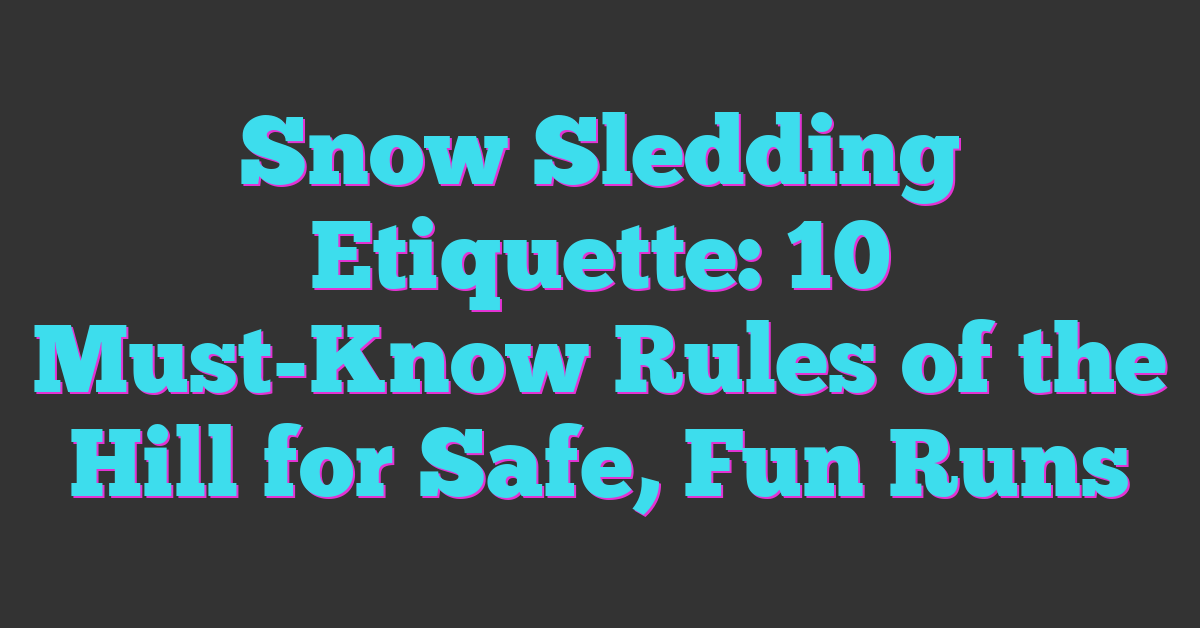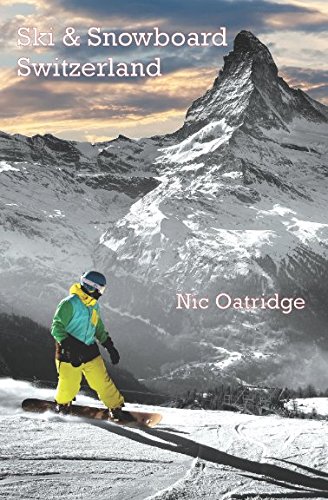Snow sledding is one of winter’s simplest joys. It’s all about feeling the rush as you glide down a snowy hill, laughter filling the crisp air. But when the hill gets busy, knowing the right way to share the space can make everyone’s day safer and more fun.

You might think sledding is just about holding on tight and enjoying the ride, but there are some unwritten rules that keep things running smoothly. Whether you’re a seasoned sledder or trying it for the first time, understanding these etiquette tips helps you avoid collisions and keeps the good vibes going.
So before you grab your sled and head out, take a moment to learn the basics of hill manners. It’s a small effort that makes a big difference for you and everyone else on the snow.
Importance of Snow Sledding Etiquette
Knowing proper sledding etiquette keeps the hill safe and fun for everyone. Respecting unwritten rules prevents accidents and makes the experience more enjoyable for you and others.
Ensuring Safety for All Participants
Following basic safety practices protects you and fellow sledders from collisions and injuries. Yielding when climbing the hill avoids crashes with riders coming down. Waiting your turn at the top ensures clear paths for those sledding downhill. Staying aware of your surroundings and using designated paths helps prevent dangerous situations. Wearing helmets and appropriate gear adds a vital layer of protection.
Promoting Respect and Enjoyment
Respecting others’ space and pace creates a welcoming environment. Sharing space, waiting patiently, and encouraging fellow sledders fosters camaraderie. Helping newcomers learn the basics and avoiding reckless behavior sets a positive tone. By sticking to etiquette, you contribute to a friendly atmosphere where everyone can focus on the thrill of sledding, making the hill a place you look forward to visiting time and time again.
Before You Hit The Hill
You’ll get the most out of sledding if you prepare properly. Choosing the right equipment and inspecting the hill ahead make a big difference in safety and fun.
Choosing the Right Equipment
Pick a sled that suits your size and the type of hill you plan to tackle. Plastic sleds handle well on groomed slopes, while wooden sleds offer sturdy control on steeper terrain. Ensure your sled has smooth edges and no cracks to prevent injuries. Wear a helmet, especially on faster or uneven hills. Gloves and waterproof boots provide grip and warmth, keeping you comfortable during your runs.
Checking the Sledding Area for Hazards
Scan the hill for obstacles such as rocks, tree roots, icy patches, or fences. Avoid hills near roads or parking lots to prevent collisions with vehicles. Choose a slope that has a clear run-out zone behind it, giving you enough space to stop safely. If other sledders are present, observe their paths and pick a route that stays clear. Inspecting conditions before you start reduces risks and sets you up for smooth, worry-free sledding.
Rules for Using the Hill
Using the hill responsibly keeps the sledding fun safe and smooth for everyone. Follow these simple guidelines to respect others and enjoy every run.
Waiting Your Turn and Avoiding Collisions
Waiting your turn respects other sledders and prevents crashes. Always climb on the side of the hill, not the sledding path, to avoid running into someone sliding down. Look uphill before starting your run, and only go when the path is clear. If someone falls, give them space and help if needed before continuing.
Staying in Designated Sledding Areas
Staying in designated areas protects everyone from unexpected hazards and preserves the hill’s condition. Use marked sledding zones and avoid venturing near roads, trees, or steep drop-offs. Respect posted signs and barriers; sledding outside safe zones increases injury risks for you and others.
Proper Start and Stop Practices
Starting and stopping with control boosts safety for all sledders. Begin your run from a stationary position at the top, facing straight downhill. Use your hands or feet to brake gradually before reaching the bottom. Once you stop, quickly move away from the sledding path to clear the way for others. This keeps the hill flowing and enjoyable for everyone.
Behavior on the Hill
Your actions on the hill shape everyone’s sledding experience. Following clear, respectful behavior helps keep the runs safe, fun, and smooth for all sledders.
Keeping an Eye on Others
Always watch the hill ahead before starting your run and stay alert while sledding. Scan for kids, slower sledders, or anyone who may cross your path. Yield to those uphill or returning to climb. Moving with awareness prevents collisions and keeps the flow steady.
How to Deal With Crowds
Keep to the sides when walking up the hill to avoid blocking sledders coming down. If the hill gets busy, wait patiently for your turn and signal when you’re ready by positioning yourself clearly. Avoid crowds by spreading out to different runs if available. Patience and clear communication avoid accidents and keep the energy positive.
Respecting the Environment and Cleanup
Protect the hill by staying on designated sledding paths and avoiding fragile areas like thin ice or vegetation. Pack out all trash and encourage others to do the same. Your care maintains the hill’s condition and shows respect for the natural environment everyone enjoys.
Tips for Parents and Guardians
You play a key role in making sledding safe and enjoyable for your kids and everyone else on the hill. Teaching good habits early ensures the fun lasts for years.
Teaching Kids Safe and Polite Sledding
Start by showing your kids how to wait their turn and climb the hill along the edges to avoid collisions. Encourage them to look uphill before starting each run so they don’t sled into someone else. Make wearing helmets a hard rule and explain why gloves and waterproof boots keep them comfortable. Reinforce respect for other sledders’ space and pace to prevent accidents and keep the atmosphere friendly. Use opportunities on the hill to remind them to stay within designated sledding areas and to watch for hidden hazards like icy patches or rocks.
Supervising Without Overstepping
Keep a close eye on your kids without hovering too much; give them room to build confidence while knowing you’re nearby. Step in when safety issues arise, but let them learn hill etiquette by observing others and practicing patience in waiting lines. Encourage them to alert you or an adult if someone else acts recklessly. Balancing oversight with independence helps your kids develop good sledding habits and enjoy the thrill of the hill responsibly.
Conclusion
Sledding is all about having fun and making great memories. When you follow the hill’s unspoken rules, you help create a safe and welcoming space for everyone to enjoy.
By staying aware, being patient, and showing respect, you’re not just protecting yourself—you’re looking out for others too. This simple mindset turns a busy hill into a friendly community spot where everyone can share the excitement.
So, gear up, be thoughtful, and get ready to slide into some snowy fun with confidence and kindness!
















